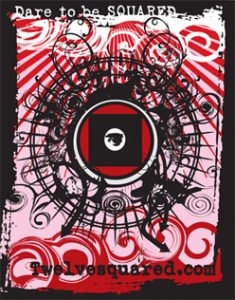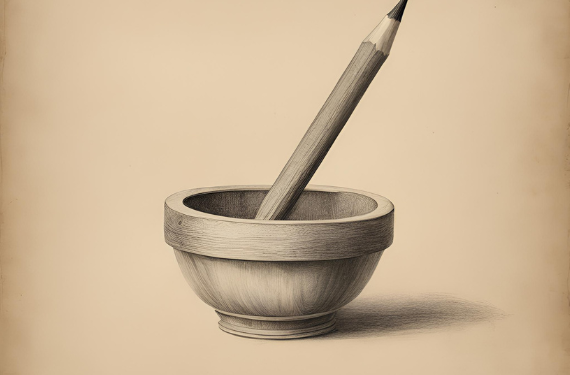The pencil, often regarded as one of the simplest tools in the world, holds a remarkable history that spans centuries. Whether used by artists sketching their masterpieces or by children learning to write their first words, the pencil has earned its place as an iconic instrument of creativity and knowledge.
This humble tool has undergone significant transformations, evolving from primitive markings in ancient times to the sleek, versatile writing and drawing instrument we know today.
The Origins of the Pencil
Before the invention of the modern pencil, ancient civilizations relied on various materials to make marks on surfaces. The Egyptians, for example, used thin brushes and reeds dipped in ink to write on papyrus, while Greeks and Romans employed styluses to scratch words into wax tablets.
However, the pencil as we know it began to take shape in the 16th century, thanks to a significant discovery in England. In 1564, a large deposit of pure, solid graphite was discovered near Borrowdale, in Cumbria. Locals soon found that this material could be cut into sticks and used to write or draw. Unlike ink, graphite left clear, dark marks that could easily be erased. Graphite was initially thought to be a type of lead, which led to the misnomer “lead pencil,” a term still used today despite the absence of actual lead in modern pencils.
This early form of pencil was primitive. The graphite sticks were often fragile and messy to handle. To solve this problem, artisans began encasing the graphite in wooden holders, giving birth to the first wood-encased pencils.
The Birth of the Modern Pencil
By the 18th century, pencils were gaining popularity across Europe. The best-quality pencils were made in Nuremberg, Germany, where craftsmen pioneered the production of pencils by encasing graphite in wooden shafts. However, because England controlled the world’s purest graphite supply, other countries were forced to find alternatives. French chemist Nicolas-Jacques Conté found a solution in 1795 by mixing powdered graphite with clay and baking the mixture. This process allowed manufacturers to produce pencils of varying hardness, leading to the standardization of pencil grades that we still use today, such as HB (medium hardness) and 2B (softer).
The pencil industry flourished during the 19th century, with companies like Faber-Castell and Staedtler in Germany and Dixon Ticonderoga in the United States becoming household names. As production techniques improved, the pencil became widely available and affordable, making it an indispensable tool for artists, writers, engineers, and students alike.
Iconic Pencil Brands
Over time, certain pencil brands have come to represent quality and tradition in both writing and art. Some of the most recognizable names include:
- Faber-Castell: Founded in 1761, Faber-Castell is one of the oldest and most prestigious pencil manufacturers in the world. Their high-quality pencils, such as the Faber-Castell 9000 and the Polychromos colored pencils, are favored by artists for their precision and color richness.
- Staedtler: Another German giant in the pencil industry, Staedtler is known for producing reliable pencils like the Mars Lumograph series, which are popular among artists, architects, and engineers.
- Dixon Ticonderoga: In the United States, Dixon Ticonderoga has long been a favorite for students and writers. Its classic yellow pencils are beloved for their smooth writing experience and durable construction.
The Pencil in Art and Design
The pencil’s impact on art and design cannot be overstated. Artists such as Vincent van Gogh and Pablo Picasso were known to use pencils for their preliminary sketches and even completed works. The pencil’s ability to create subtle gradients of light and shadow made it ideal for rendering detailed, realistic images.
In the field of technical design, pencils became essential tools for architects and engineers. Before the advent of computer-aided design (CAD), every blueprint, sketch, and technical drawing was completed by hand using pencils. Even today, in the digital age, many designers start their creative process with pencil sketches before moving on to digital tools.
The Pencil in the Digital Age
Despite the rise of computers and digital devices, the pencil has not become obsolete. Artists, designers, and writers still appreciate the tactile connection that pencils offer. Even in a world filled with tablets and styluses, many find that the simple act of putting pencil to paper fosters creativity in a way that digital tools cannot replicate.
The pencil has also made its way into the digital world. Companies like Apple have designed tools like the Apple Pencil, which offers a digital drawing experience akin to the real thing. This marriage of tradition and technology demonstrates that while our tools may evolve, the basic human need to create remains constant.
Recommended Reads on the History of Pencils
For those who want to dive deeper into the fascinating history of this essential tool, several books explore the topic in greater detail:
- “The Pencil: A History of Design and Circumstance“ by Henry Petroski. This in-depth book chronicles the evolution of the pencil, from its origins to its modern-day use, and explores its significance in technology and culture.
- “Pencils You Should Know“ by Caroline Weaver. This visually captivating book celebrates the history and design of pencils through profiles of iconic pencils from around the world.
From its humble beginnings as a piece of natural graphite to its status as a must-have tool in every classroom, studio, and office, the pencil has a long and storied history. As a testament to its enduring utility, the pencil continues to inspire and assist in the creation of art, design, and writing.
In an age of rapidly advancing technology, the pencil reminds us of the beauty in simplicity. Whether you’re sketching, writing, or just jotting down notes, the pencil remains a timeless companion on the creative journey.

